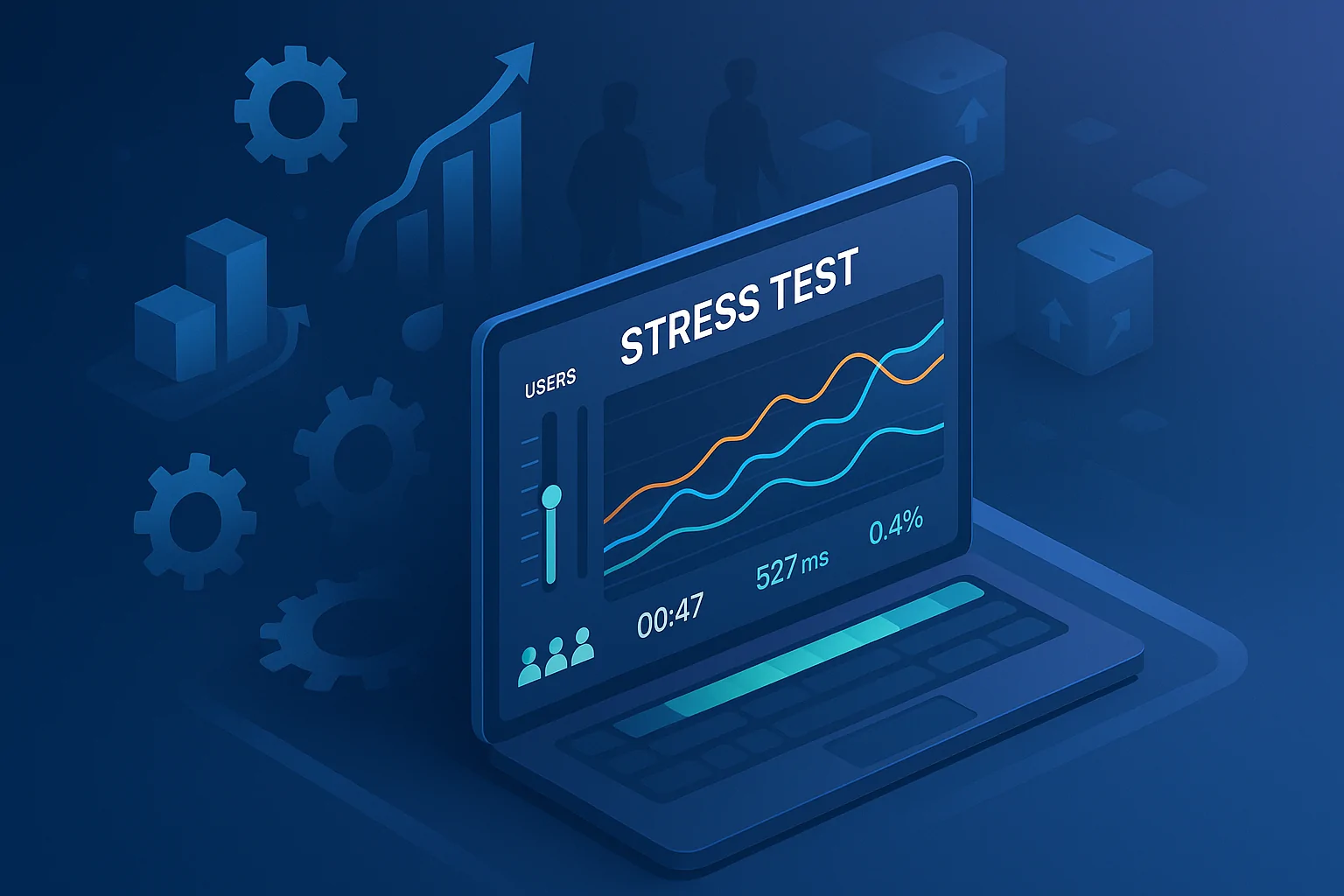Performance testing is more than just a technical box to check; it’s a cornerstone of developing software that performs reliably under load. In this article, we’ll explore how software scalability testing identifies and tames bottlenecks, ensuring that applications remain reliable and scalable. From initial development stages through deployment, understanding the critical role of performance testing can transform user experiences and fortify application architecture against pressures of growth.
- Understanding the Importance of Performance Testing
- Challenges and Solutions in Performance Testing
- Enhancing User Experience and Scalability
- References
Understanding the Importance of Performance Testing
Performance testing plays an essential role in software development. It circles back to the heart of creating applications that not only function as intended but do so efficiently and reliably across diverse situations. Identifying and addressing potential bottlenecks early ensures that applications don’t just survive but thrive under user demand, presenting a crucial benefit that spans industries.
Why Performance Testing is Crucial for Software Development
Performance testing or software scalability testing shouldn’t be an afterthought. Integrating it early in the development process can prevent system failures and significantly enhance scalability. Just as you wouldn’t build a skyscraper without running stress tests on its foundation, software’s scalability hinges on rigorous software scalability testing evaluations as illustrated in Mastering Performance Breakpoint Test Profiles.
Global App Testing illuminates the benefits of incorporating diverse types of testing to ensure reliability and scalability, significantly preventing potential pitfalls. Moreover, including results from studies such as A Study on Software Metrics and Software Quality correlates testing with performance quality. Software scalability testing doesn’t just detect issues; it crafts a blueprint for enhancement.
Types of Performance Testing Methods
A spectrum of performance testing methods – from load tests that simulate multiple users to stress tests pushing systems beyond their limits – each serves a unique purpose. Modern software scalability testing platforms provide indispensable support in identifying areas for improvement.. For instance, exploring the Different Types of Performance Testing Explained can effectively lay out a map for developers to follow.

Companies leverage these methods to preemptively correct inefficiencies, buoyed by insights from industry testimonials like BairesDev’s case studies. Each type aligns to address particular performance goals, ensuring that both software testing coverage and depth are achieved.
Real-world Examples of Performance Testing Success
Performance testing sets the stage for noticeable success with case studies shining a light on tangible improvements. Take PractiTest’s performance metrics; they spotlight how deliberate testing fosters robust results, similar to those achieved through practices in Enhancing User Experience with Application Monitoring. In practice, these tactics have curtailed downtime, optimised processes, and cushioned user experience from service interruptions.

Challenges and Solutions in Performance Testing
Despite its merits, software scalability testing presents challenges that teams must manoeuvre adeptly. Navigating these hurdles involves recognizing bottlenecks and inefficient patterns, then crafting streamlined solutions that ensure optimized workflows.
Common Bottlenecks and Their Impact

Software systems often wrestle with bottlenecks that constrict performance – think of them as clogs in the plumbing system of your application. These constraints demand resolution for the software to perform smoothly, as discussed in Test & Identify Bottlenecks in Performance Testing. Effective diagnosis tools are indispensable, turning chaos into coherent, manageable tasks – thus vital for any development lifecycle.
Effective Strategies for Bottleneck Prevention
Preventative strategies go a long way in managing potential choke points before they escalate. Implementing resource management and workflow optimization techniques, harnessed through insights from industry authorities, transforms reactive firefighting to proactive planning. By integrating suggestions like those from PractiTest on resource allocation, teams pivot towards efficiency, creating a robust testing infrastructure that anticipates needs.
Enhancing User Experience and Scalability
In the age of instantaneous digital gratification, user experience matters immensely. Software scalability testing fosters seamless interactions, leaving no room for sluggish, cumbersome processes. The correlation between performance testing and user satisfaction is a crucial conversation for anyone vested in conveying excellence, as highlighted in Best Practices for Testing Web Applications.

Design Principles to Promote Scalability
Scalability is not just about widening the bridge – it involves ensuring it stands firm under a variety of conditions. Leveraging robust design principles demonstrated in The Complete Guide to Scalability Testing fortifies applications to grow with ease while maintaining integrity. As insights from BairesDev indicate, strategically adapting architectural foundations can propel scalability efforts, thus it is pivotal to instill such principles at core development stages.
Testing for Optimal User Experience
User experience hinges on performance that meets expectations without a hitch. With minimized latencies and optimized interactions, effective performance testing underpins user satisfaction. HeadSpin’s expertise in enhancing UX emphasizes how strategic testing aligns functionality with a harmonious user interface.
References
- Radview. (N.D.). Mastering Performance Breakpoint Test Profiles. Retrieved from Radview
- Radview. (N.D.). Different Types of Performance Testing Explained. Retrieved from Radview
- BairesDev. (N.D.). The Essential Guide to Software Scalability for Growing Applications. Retrieved from BairesDev
- PractiTest. (N.D.). 8 Benefits of Using AI in Software Testing. Retrieved from PractiTest






